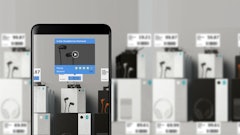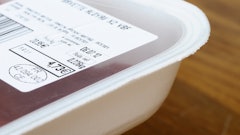
In current supply chain discussions and studies, the focus is largely procurement-based. It is no surprise that the last two years have visibly disrupted supply chain strategies across all industries. Businesses across various segments are struggling with supply shortages. Today, pre-pandemic just-in-time concepts are often stretched to the breaking point and it is evident that new, more resilient concepts are necessary.
Equally impacted, but not as frequently discussed, is the other end of the supply chain – order fulfillment or last-mile delivery. In the last two years, the impacts of the pandemic further accelerated the growth of e-commerce (both B2B and B2C) significantly, thus dramatically increasing the overall shipping volume. And of course, customers expect premium, flexible and fast deliveries more than ever. To meet these expectations and capitalize on new substantial opportunities, wholesale distributors must adapt and find new solutions.
What is last-mile delivery?
Last-mile delivery usually describes the last leg of a product’s journey, often from a wholesaler’s warehouse to a customer location. It not only accounts for about half of the total delivery cost, but is also key to customer satisfaction.
Safeguarding profitability while meeting customer expectations is a complex problem with many variables. With the ever-growing delivery volume, warehouse operations and delivery fleets are stretched to their limits. And, let’s not forget the shortage of qualified warehouse employees or truck drivers, to name just two areas. Once loaded on a truck, deliveries often battle their way through congested streets. So, it is maybe not surprising that some wholesale companies do not just consider fleet maintenance, payroll and fuel as cost elements, but even budget for traffic violation fines and parking tickets. More recently, regulatory requirements e.g., for sustainability considerations are adding boundary conditions.
To balance speed and cost with inventory positioning, businesses must establish the best fulfillment concept that provides flexible delivery options, improves profitability and demonstrates a commitment to sustainability (or at least fulfills regulations).
How can distributors get closer to the customer?
A key element for successful fulfillment is a well-designed network of strategically located warehouses that ensure on-time deliveries across the entire customer base. Often, these networks are continuously expanded, either by adding new locations or via acquisitions. However, with the growing demand for highly flexible delivery options by its customers, there are limits for wholesalers on how many large warehouses they can add to the supply chain – both from a financial and an infrastructure point of view.
Businesses can consider implementing alternative ideas such as complementing traditional distribution centers with micro fulfillment centers (MFCs). MFCs are small warehouses located close to key demand areas and designed to fulfill orders fast and efficiently. With intelligent forecasting and inventory planning, MFCs can expand options in fulfilling fast orders on time-sensitive, key products.
Some wholesale companies are taking this concept another step closer to their customers, actually directly to them with sales points at the customer’s location. In its simplest form, this could be a vending machine for most needed items. But, increasingly these sales points have grown into full-scale kiosks or on-site sales trucks. These instant order fulfillment does not only provide a more convenient shopping experience thus boosting customer satisfaction, but businesses also have full insight into consumption patterns and trends – who buys what and why to guarantee immediate replenishment and create new offers and tailored promotions. In addition to the product sale, such sales points can also be designed as service points, offering for example maintenance or repair options.
Both MFCs and on-site sales points have one thing in common -- due to the limited space, they can only carry a smaller inventory. With 3D printing, this can be partly compensated – especially for long-tale but critical products. If a critical part needs replacement to continue operations it might be possible to print it at a location nearby and shorten delivery times significantly, even for parts that were traditionally not always on stock.
Increasing the delivery speed of other tangible products is just as important, which is where 3D printing can help close inventory gaps in these small warehouses by producing the products on-site. By placing these centers closer to consumers with the added benefit of additive manufacturing, businesses can significantly cut down on last-mile delivery times. Furthermore, at a drastically reduced size than their predecessors, these small centers would cost a fraction to start up and could help reduce order-related costs.
Advanced planning, instant insight and tailored solutions
Inevitably and in due time, businesses need to adapt to new realities and more demanding business situations. Wholesalers must get closer to their customers, finetune their offers to their customer demand and introduce new, flexible and more agile delivery strategies that empower them to re-shift priorities on the fly. And as they implement these objectives, they must balance the drive for superior service with safeguarding profit margins. So perhaps it is in the best interest of a business to consider several fulfillment concepts in parallel. The solutions must be as diverse as the customer expectations.




















